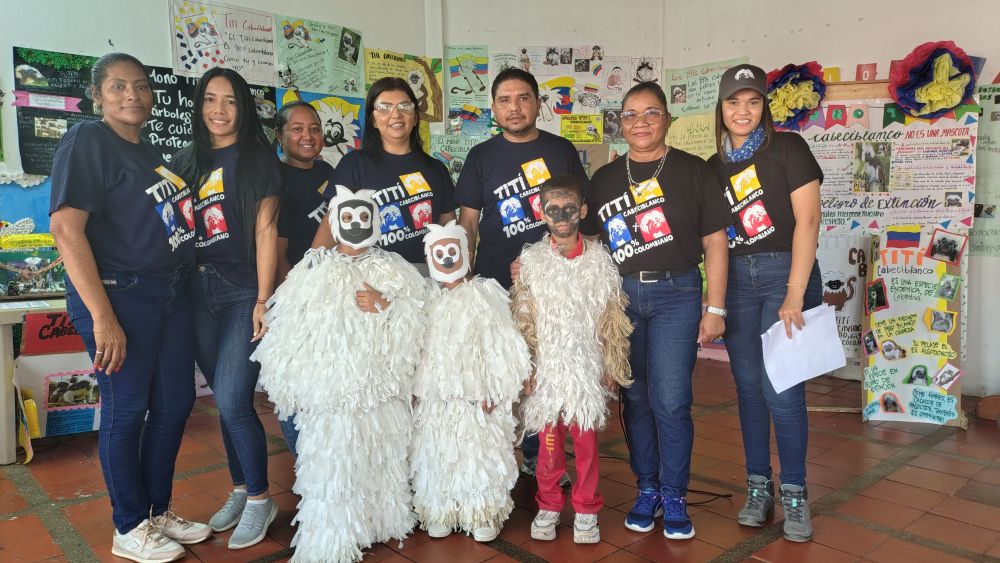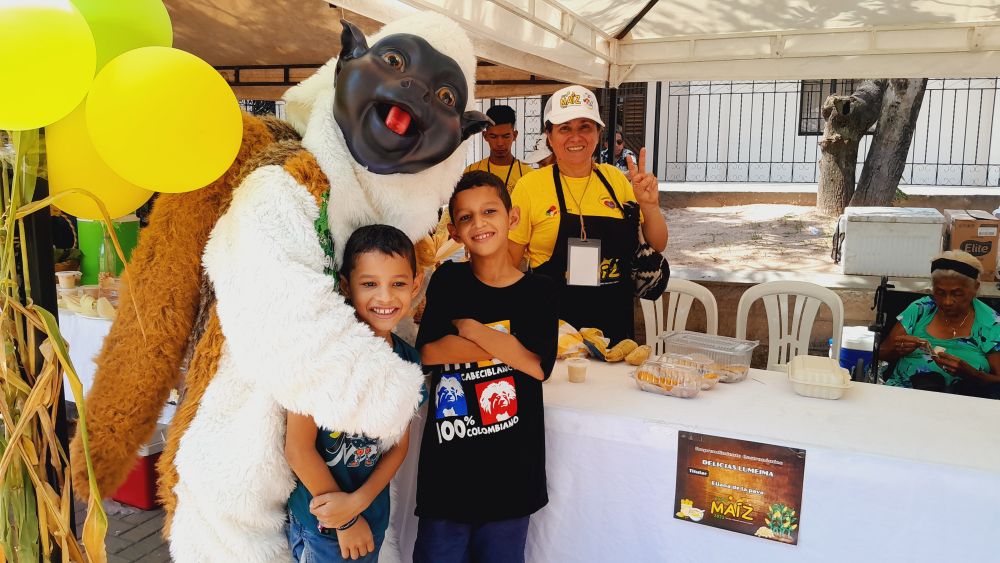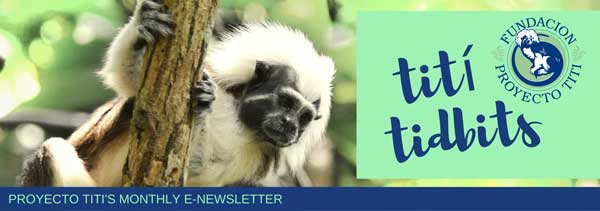
A Festival of Conservation and Creativity: Expanding the Month of the Cotton-top Tamarin
Every August, Colombia shines a little brighter—not only from the Caribbean sun but from the joy, pride, and imagination that flow during the Month of the Cotton-top Tamarin celebration. What began in 2008 as a small community festival in Los Límites has blossomed into a nationwide celebration of one of Colombia’s most charismatic and critically endangered primates.
This year’s celebration reached unprecedented heights, as schools, communities, artisans, zoos, and cultural festivals across the country infused their traditions with conservation. The results were breathtaking: tamarins sculpted from corn husks, parades inspired by Medellín’s flower festival, murals splashed across school walls, and even cookies shaped like cotton-top tamarins that raised funds for forest restoration. Together, these efforts demonstrated a powerful truth: conservation thrives when it is rooted in culture and fueled by creativity.
%20(1).jpeg?ver=2025-09-18-133002-973)
.JPG?ver=2025-09-18-133532-650)
.JPG?ver=2025-09-18-140211-743)
.jpeg?ver=2025-09-18-140347-003)
%20(1).jpeg?ver=2025-09-18-140511-740)

.jpg?ver=2025-09-18-143614-683)
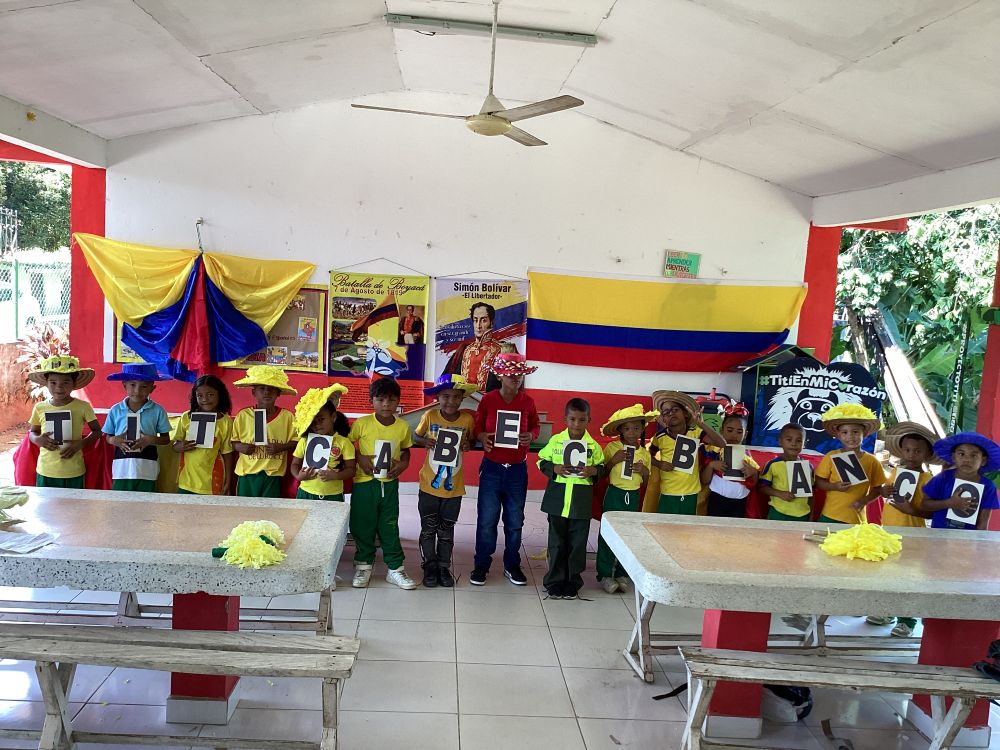
From Los Límites to a Nation United
The story of the Day of the Cotton-top Tamarin—began in Los Límites, a small town where Proyecto Tití has long worked with communities to protect tropical dry forests. The community, grateful for the opportunities and pride conservation had brought, wanted to honor the tamarin. In 2008, they organized the first festival, where children donned cotton-top masks, musicians played traditional rhythms, artisans displayed eco-friendly crafts, and our ambassador, the Cotton-top Tamarin Queen was selected.
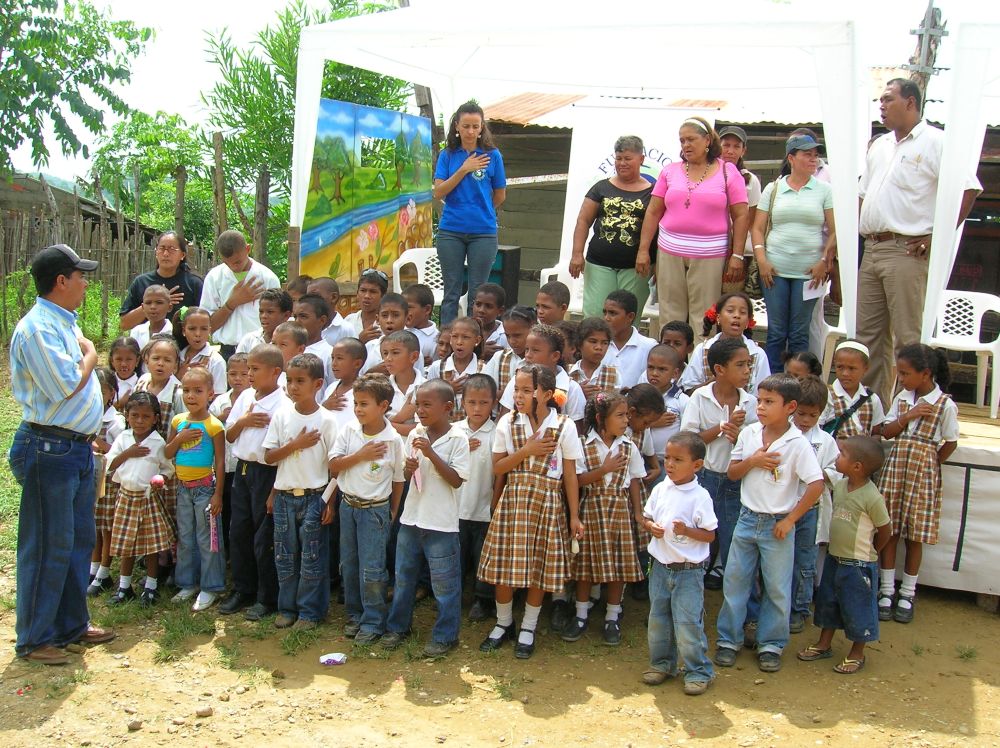
In the years since, the celebration has spread far beyond Los Límites. Schools across Atlántico, Bolívar, and Sucre, as well as many new communities have embraced the tamarin as a symbol of Colombian identity. What began as a single day is now a month-long movement, uniting thousands in conservation through joy and cultural pride.
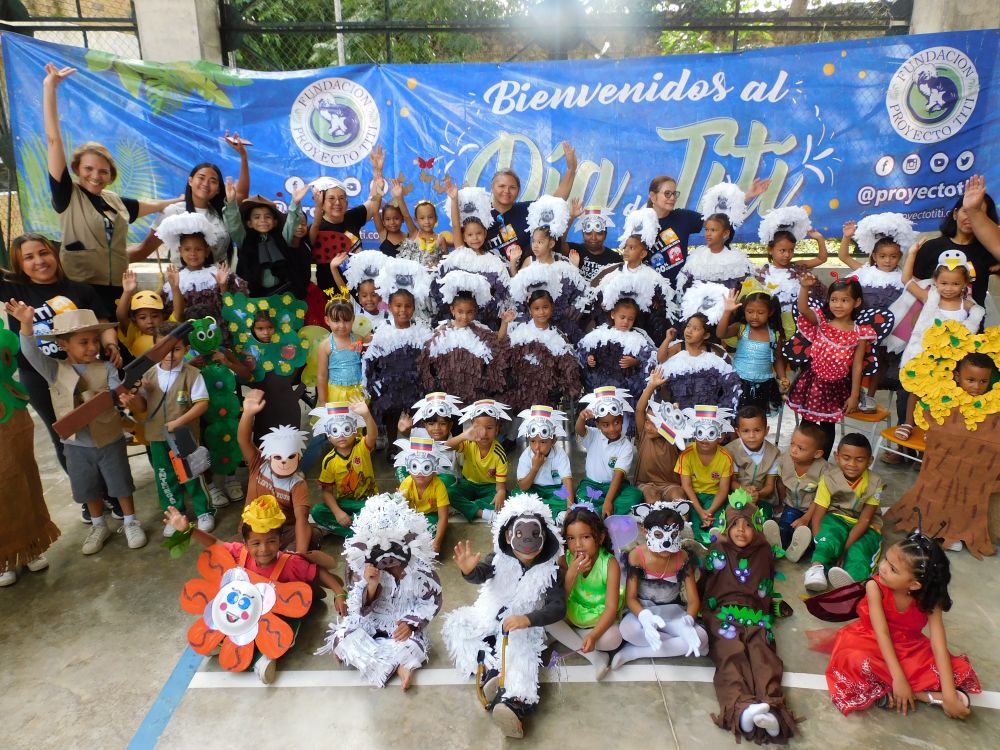

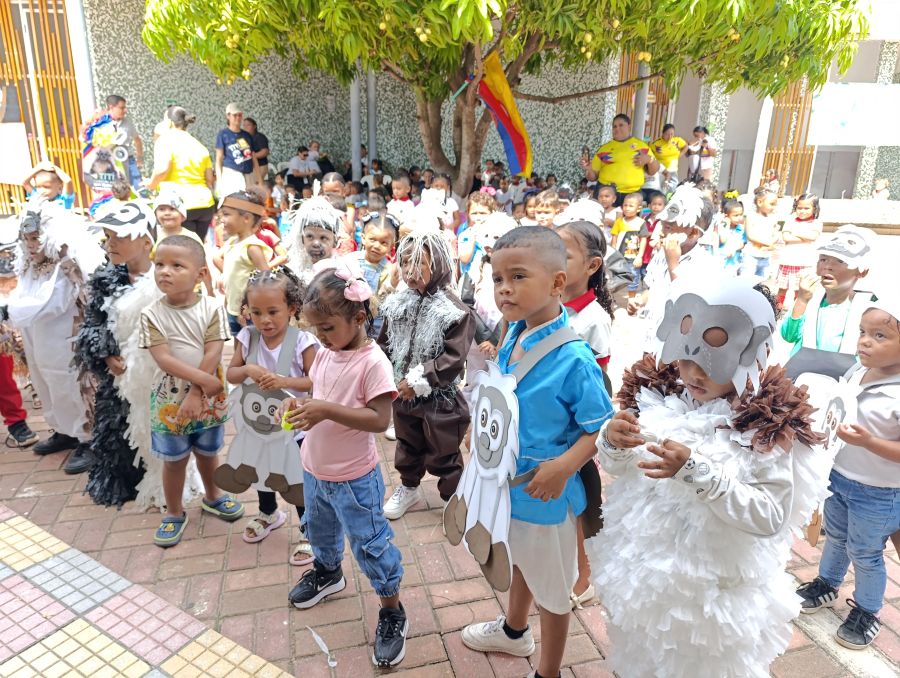
.JPG?ver=2025-09-25-123714-013)
New Communities, New Energy
Perhaps the most moving development this year was the participation of communities that had never before joined Proyecto Tití’s programs. Thanks to the leadership of the Secretaría de Educación de la Gobernación del Atlántico, schools across the region were encouraged to host their own tamarin festivities. With limited resources but endless creativity, teachers and students transformed classrooms and plazas into vibrant stages. From theater productions about tamarins and protecting their forests to parades of children dressed as “mini tamarins,” the message was clear: this animal belongs to Colombia, and its future depends on collective action.
.jpeg?ver=2025-09-25-130433-547)
.jpeg?ver=2025-09-25-130527-977)
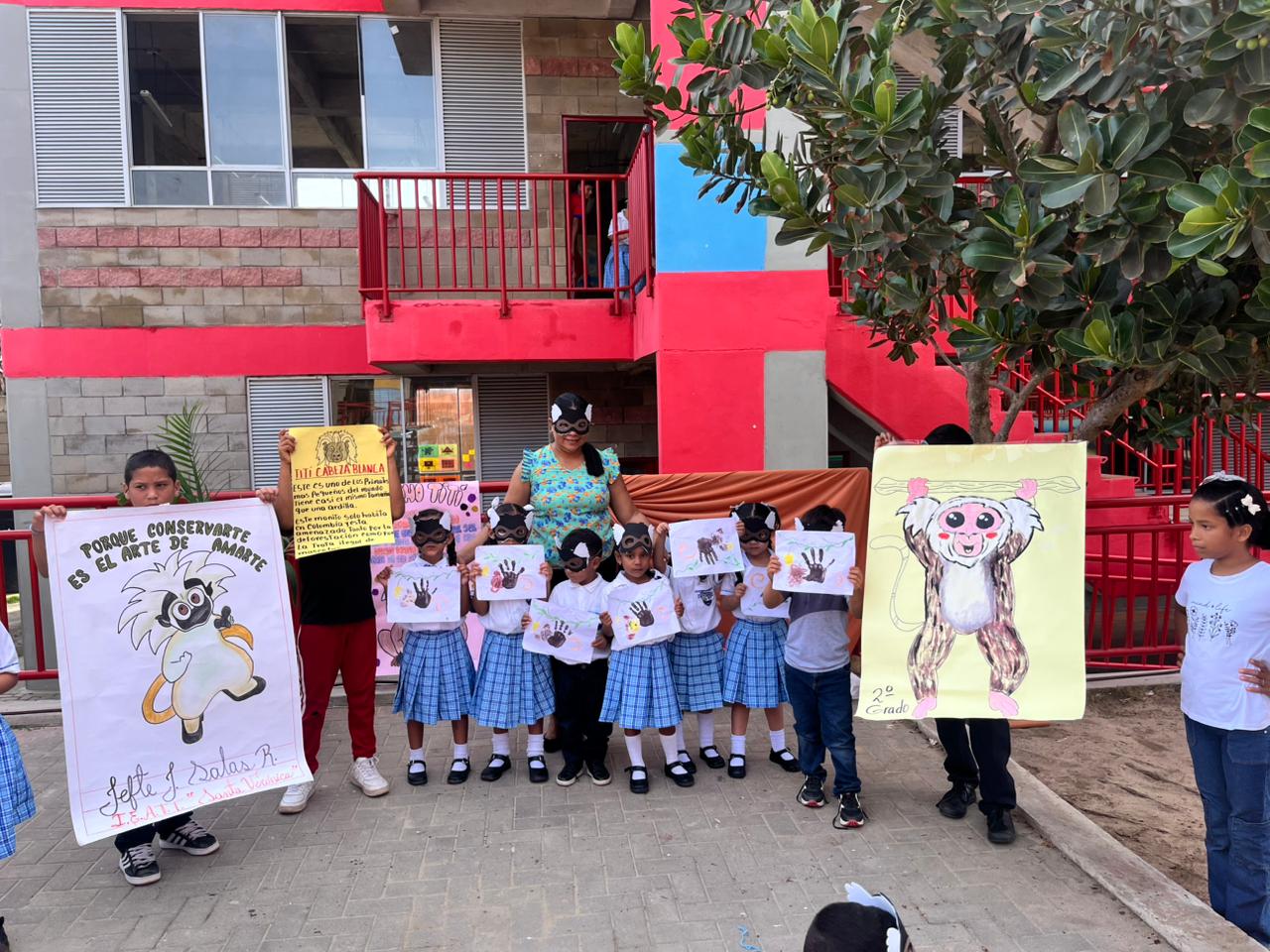
Art, Theater, and Music as Conservation Tools
The power of the celebration lies in its creativity. This year’s events featured plays, dances, and songs that brought the tamarin’s story to life. Students wrote poems, fables, and even acrostics in which the letters of “tití cabeciblanco” spelled conservation messages.
Visual art was equally inspiring. Classrooms decorated bulletin boards, painted murals, and designed posters showing tamarins living in harmony with people. Costumes and masks made from recycled bottles, fabric scraps, cardboard, and colorful newspaper clippings turned everyday materials into powerful conservation symbols. These imaginative works were more than school projects—they were declarations of pride and responsibility.
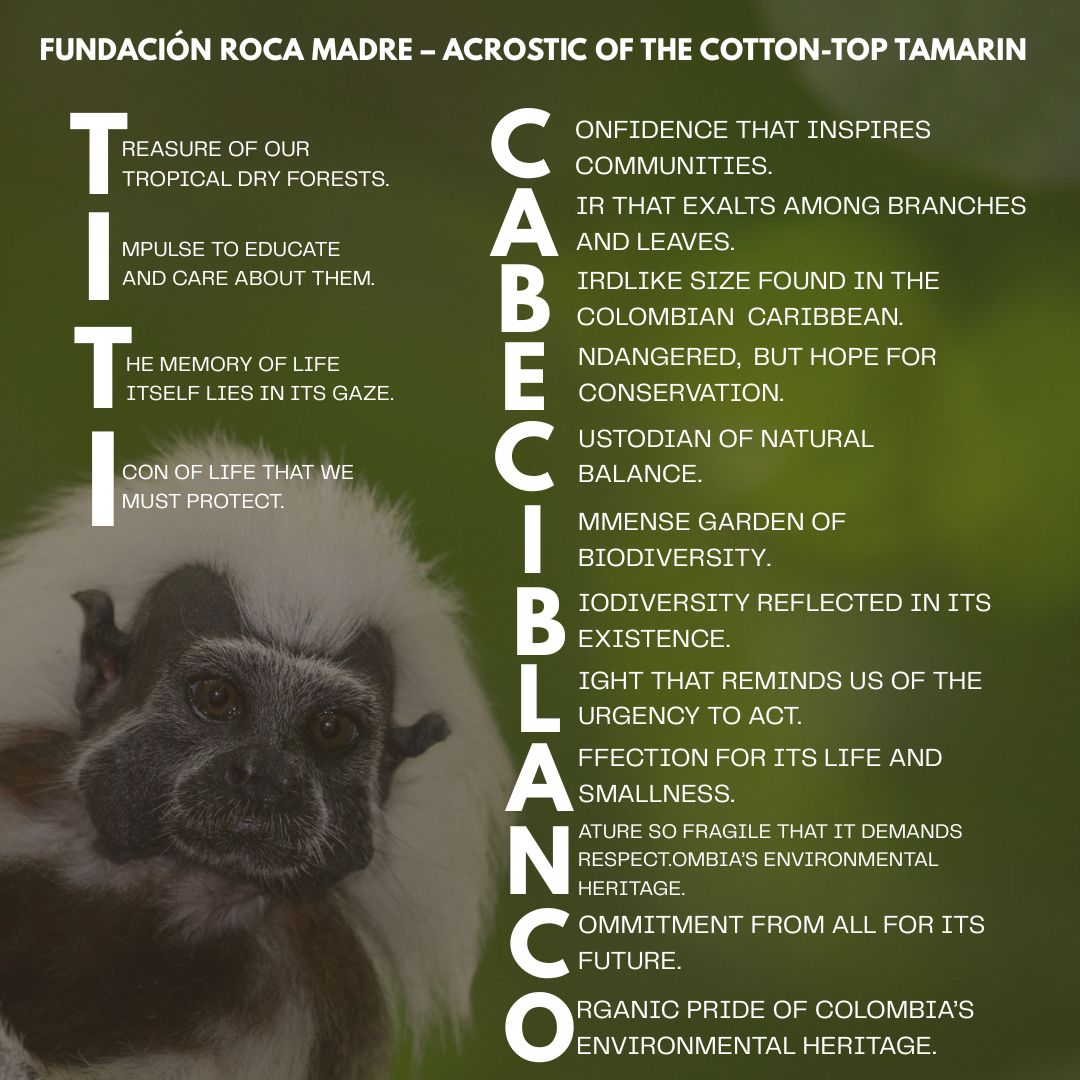
.jpg?ver=2025-09-19-130622-107)
A Cultural Twist: The “Desfile de Silleteros”
Among the many innovations, one stood out: the “Desfile de Silleteros.” Inspired by Medellín’s world-famous flower festival, children carried handmade tamarin displays on their backs just like they do in the parade in Medellin. Each piece told a story—tamarins leaping through trees, forests regrowing through restoration, or the dangers of deforestation.
By adapting a beloved Colombian tradition to conservation, the “Desfile de Silleteros” built a cultural bridge. It showed that protecting wildlife is not separate from Colombian identity—it is part of it. Many dream that one day, tamarin displays may march alongside floral creations in Medellín’s iconic parade.
VIEW VIDEO

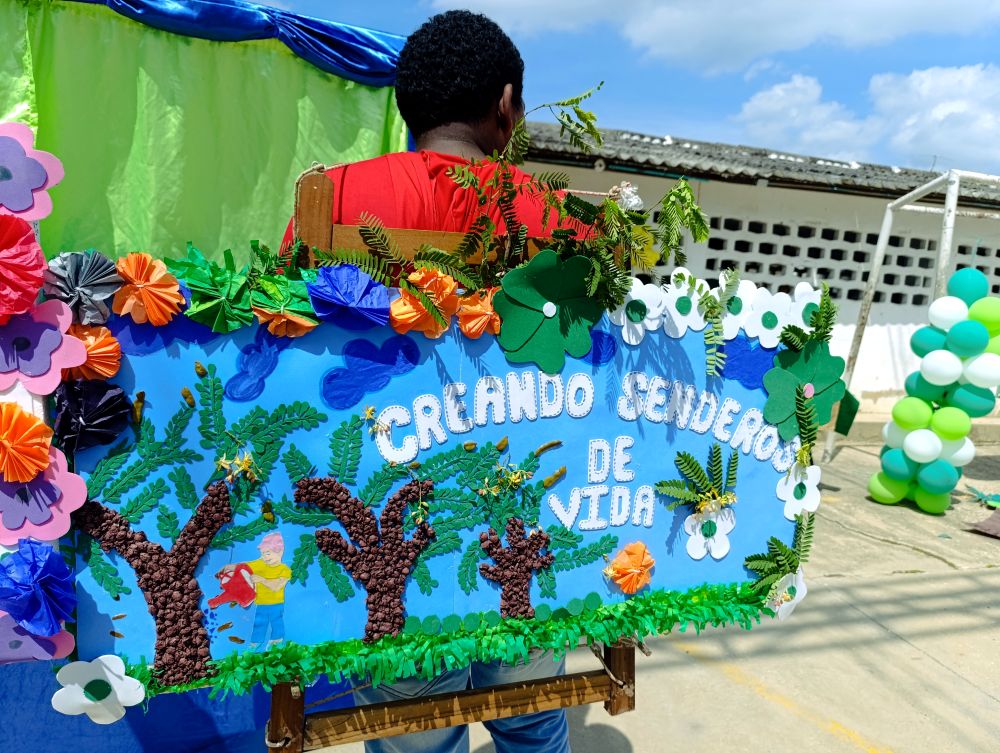
Corn and Conservation: The Festival del Maíz
Creativity wasn’t confined to schools. In Baranoa’s Festival del Maíz, artisans and families celebrated both corn and cotton-top tamarins. Tamarins sculpted from maize husks became festival highlights, blending cultural heritage with biodiversity awareness.
Children played conservation-themed games like Tití Twister, which taught lessons about habitat loss and the illegal pet trade through laughter and play. At every turn, tamarins and maize were paired as symbols of Colombian identity—100% local, resilient, and worth protecting.

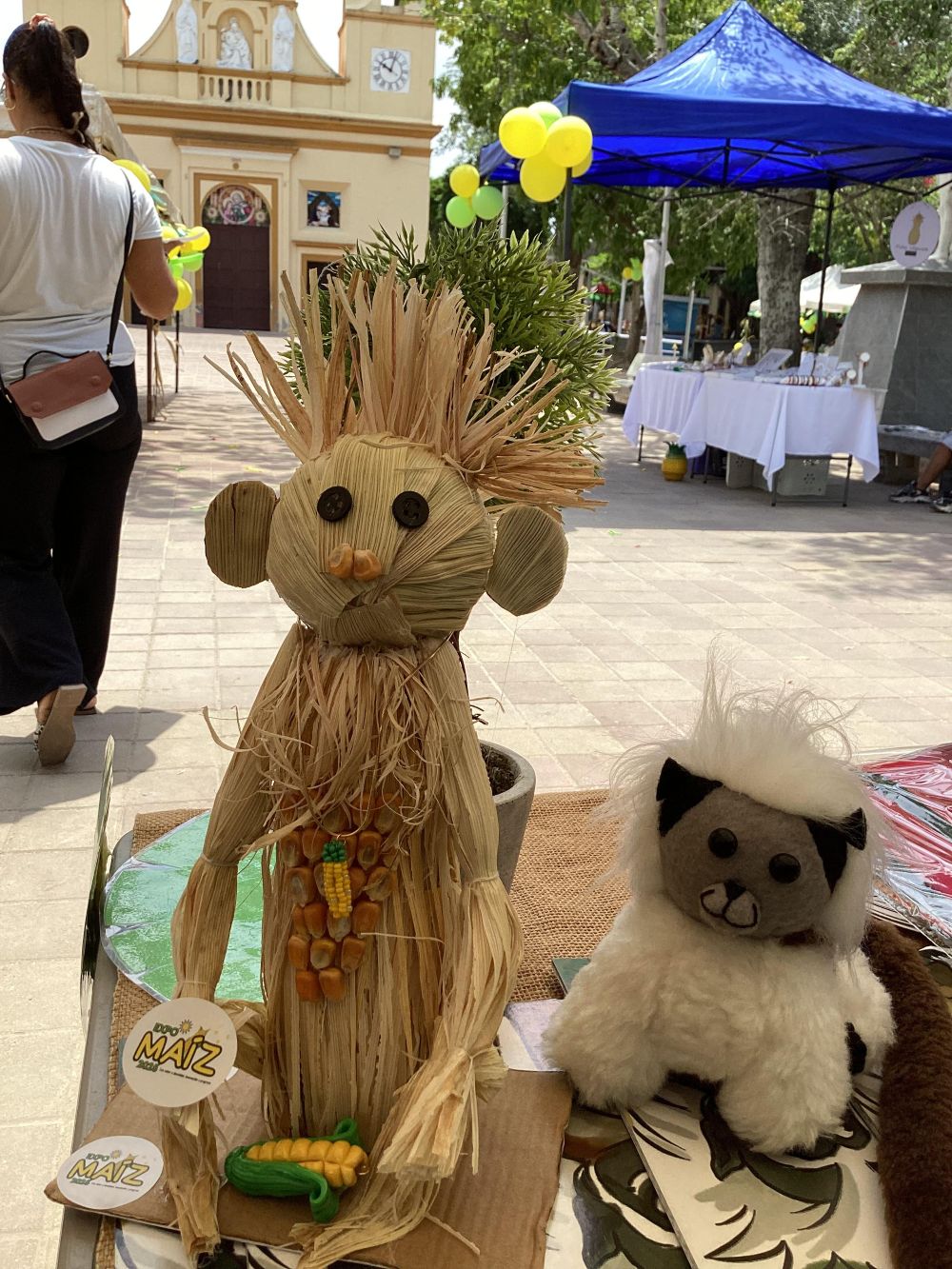
.jpg?ver=2025-09-30-150955-657)
Zoos and Families Join the Fun
The celebration reached urban audiences as well. At the Barranquilla Zoo, weekend events drew families eager to learn about tamarins through interactive activities. By engaging children in games, art, and conservation-themed performances, the zoo brought the message to city dwellers who may not have known tamarins live so close to home. This collaboration between cultural institutions, schools, and conservationists expanded the celebration’s reach, ensuring that the tamarin’s story resonated across generations and geographies.
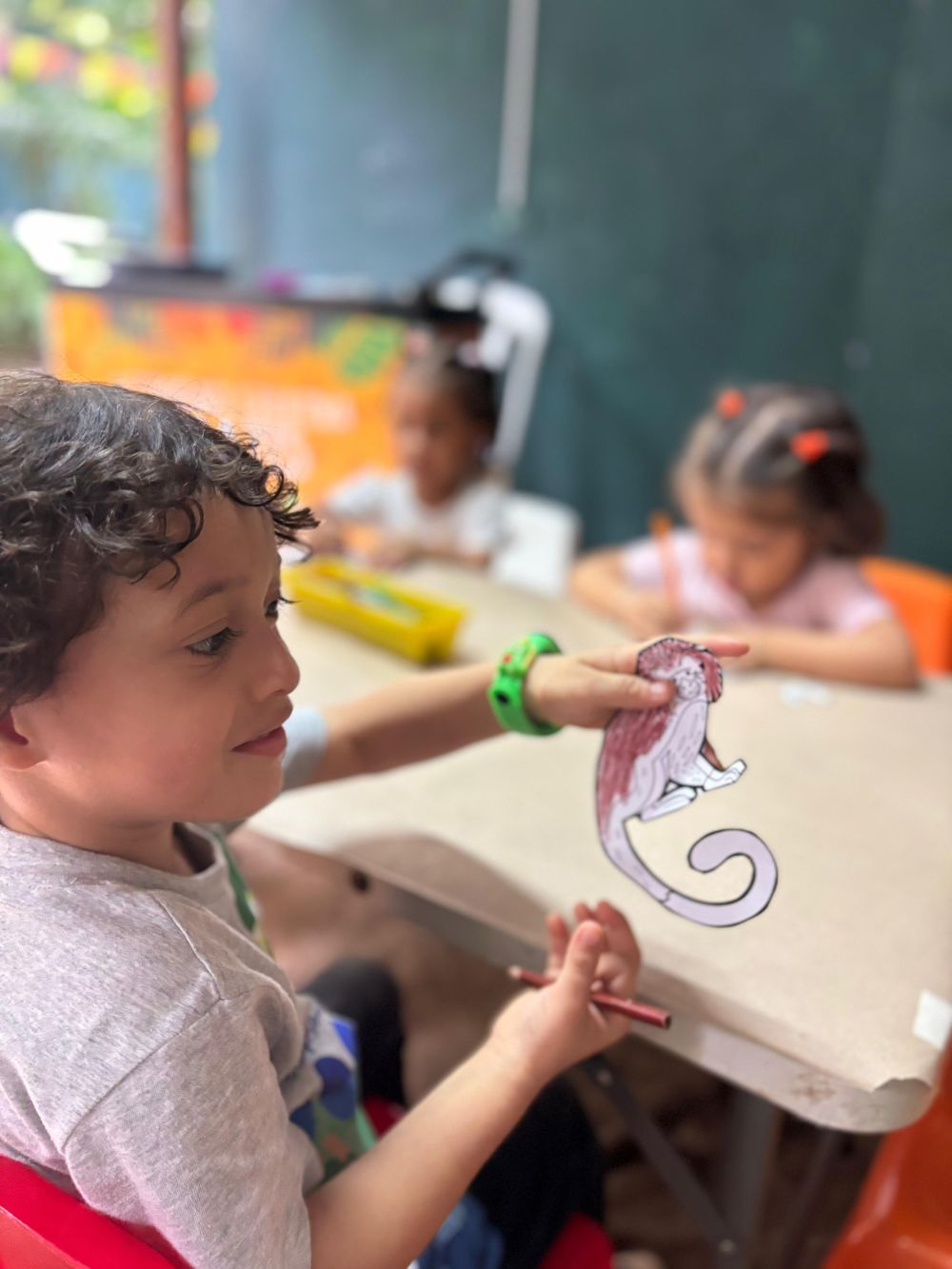
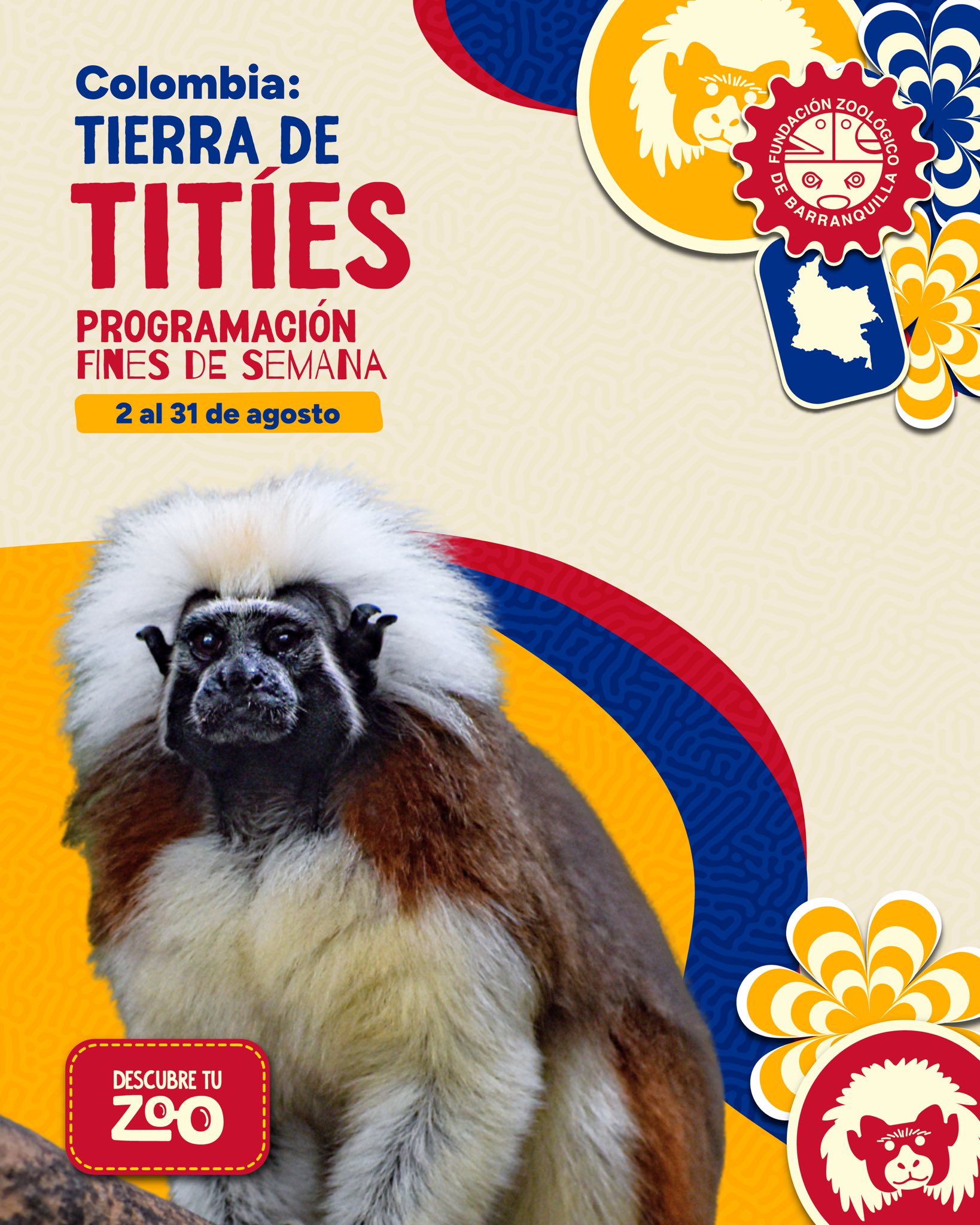
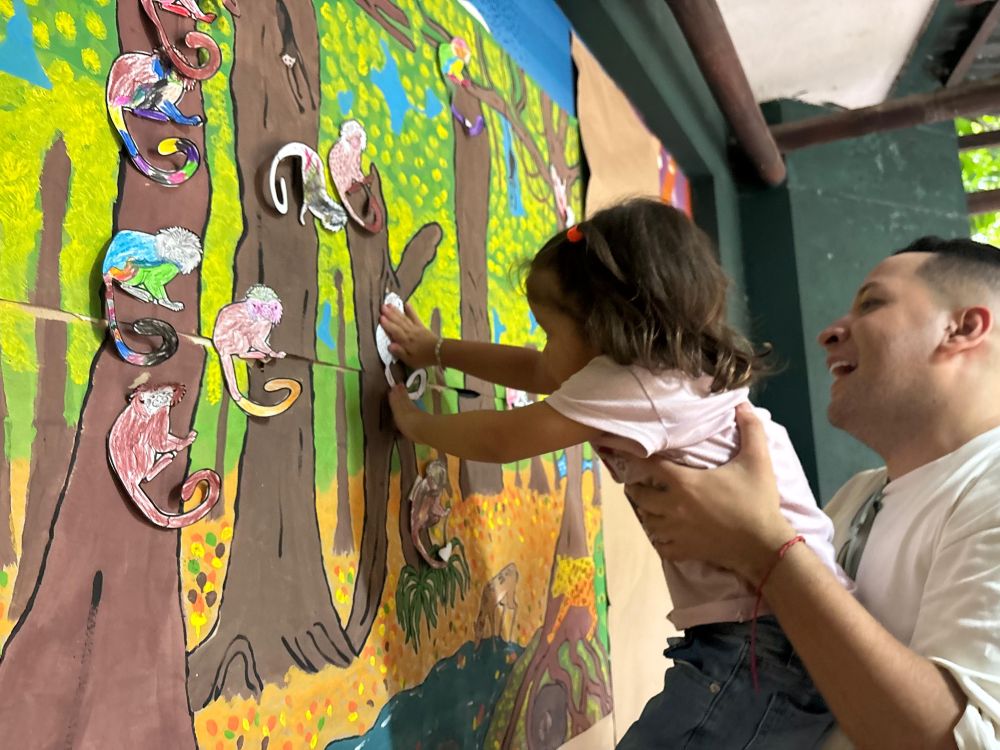
Conservation in Verse and Image
The depth of creativity was staggering. Students produced acrostics, short videos, and murals that went beyond the classroom. In one video from Fundación Roca Madre, children passionately spoke about the importance of conservation. VIEW VIDEO
At Colegio Dairo Arrieta Yepez, students shared performances that blended knowledge with pride. VIEW VIDEO
These projects demonstrated that conservation education doesn’t have to be limited to science lessons—it can live in art, music, and storytelling. And when it does, it sparks emotional connections that last far beyond the festivities.
.jpeg?ver=2025-09-29-091641-797)
Why Creativity Matters in Conservation
Conservation often depends on data, research, and policies. But this year’s Month of the Cotton-op Tamarin celebration reminded us that creativity is equally vital. Art, theater, music, and cultural traditions reach hearts in ways statistics cannot. They allow people to see the tamarin not as an abstract species but as a neighbor worth celebrating. By rooting conservation in cultural pride, the celebration turned awareness into ownership. Tamarins were no longer “an endangered species out there”—they became “our tamarins, our forests, our heritage.” That emotional connection is the foundation of lasting conservation.
.jpeg?ver=2025-09-29-092908-720)
%20(1).jpeg?ver=2025-09-29-093131-010)

.jpg?ver=2025-09-29-094109-170)
.JPG?ver=2025-09-29-094236-677)
Final Reflections
To all of us at Proyecto Titi, the Month of the Cotton-top Tamarin is more than a festival. It is a living testament to the power of community, creativity, and culture in conservation. From corn husk tamarins in Baranoa to silleteros parades in schools, from murals, dances, and art projects to zoo festivals, the celebration has expanded in ways no one could have imagined.
It tells the world that the cotton-top tamarin is not just an endangered species—it is a national treasure, 100% Colombian. And just as maize sustains our bodies, tamarins remind us of our duty to sustain the forests that give life. Each August, we celebrate. But every day that follows, we continue the work—protecting forests, empowering communities, and keeping cotton-top tamarins wild. Because conservation is not only about saving species. It is about celebrating life, honoring connections, and ensuring that future generations inherit a Colombia as rich in culture as it is in biodiversity. “The cotton-top tamarin is ours—our pride, our story, our responsibility.” Professora Nevis
